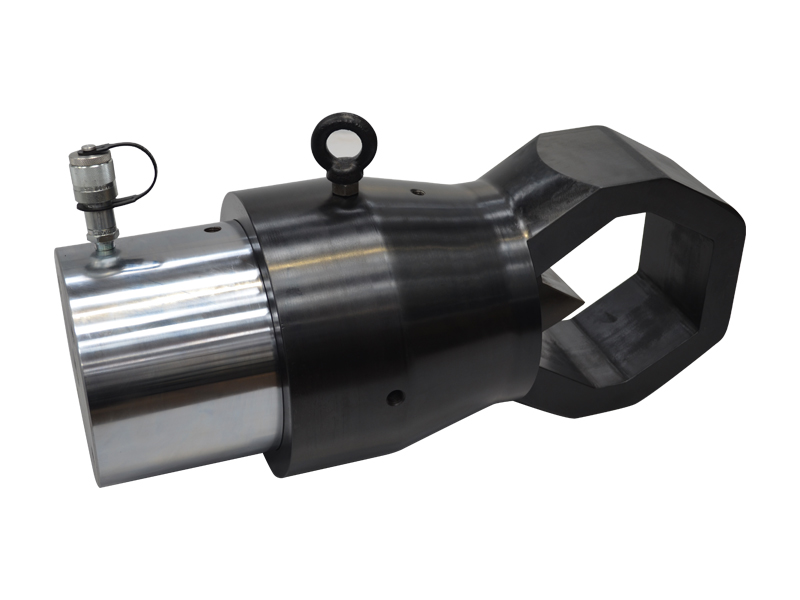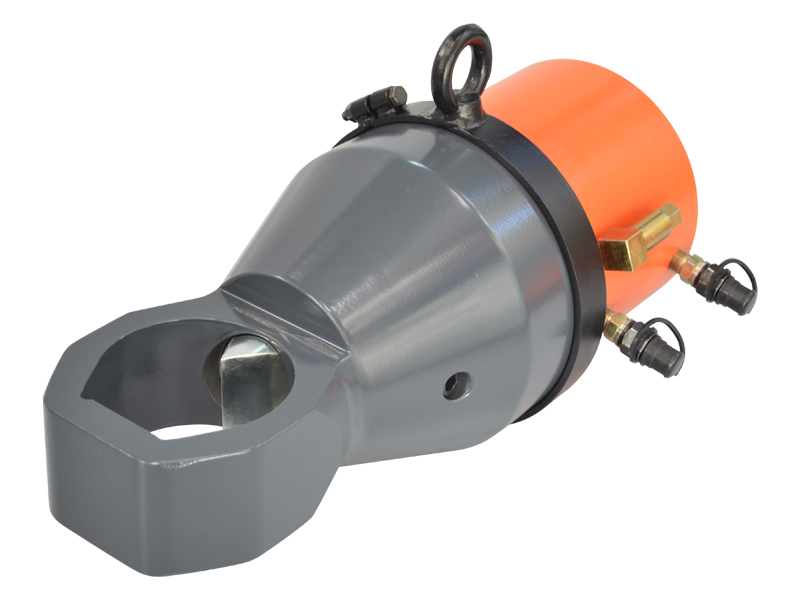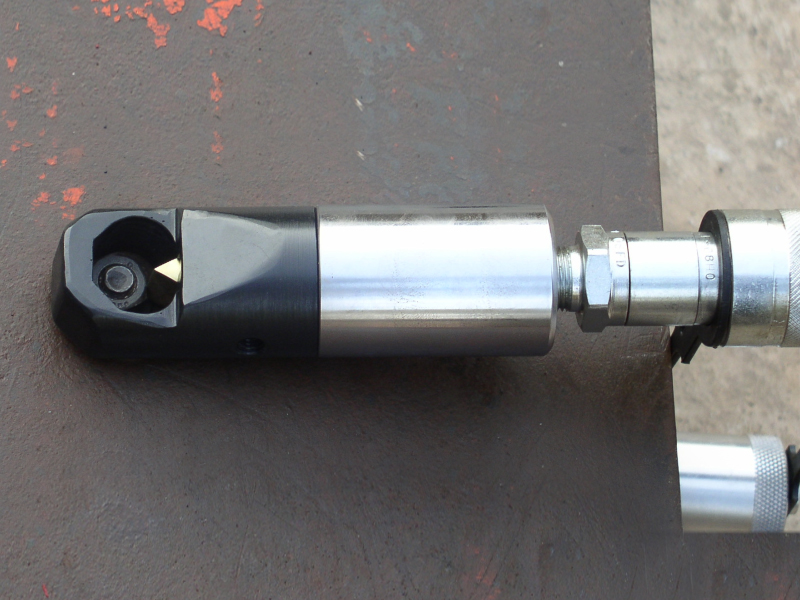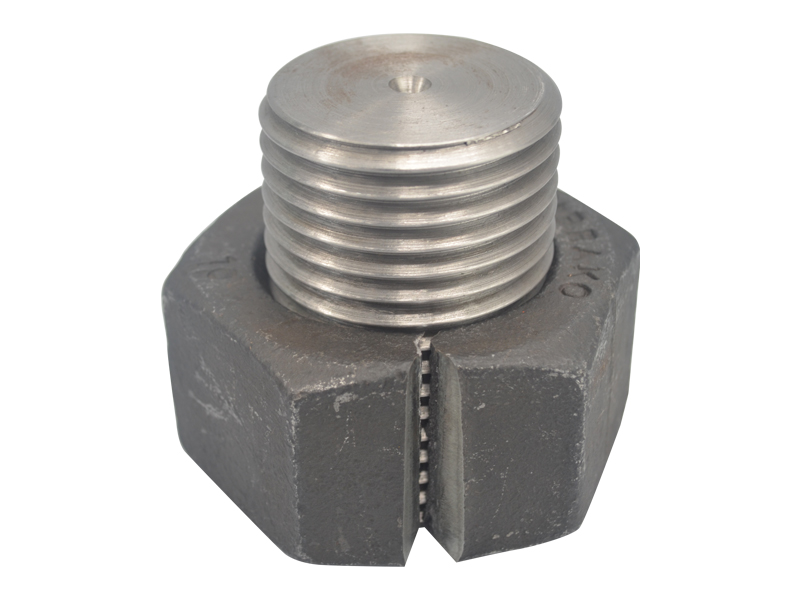- Hydraulic Tank Jack
- Pancake Jacks Plain Ram
- Pancake Jacks Threaded Ram
- Flat Jacks Single Acting
- Low Height Jacks Single Acting
- General Purpose Jacks Single Acting
- General Purpose Jacks Threaded Ram
- General Purpose Jacks Double Acting
- General Purpose Threaded Ram Double acting
- Alluminium General Purpose Threaded Ram
- Alluminium General Purpose Plain Ram
- Hollow Ram Jacks Single Acting
- Hollow Ram Jacks Double Acting
- Hydraulic Hand Pumps Aluminium
Stud Bolt Tensioners Suppliers
Are you looking for a dependable and efficient way to tighten bolts and studs on your critical applications? If so, consider using stud bolt tensioners, which are hydraulic tools that apply a direct axial load to the fastener without any torsional stress or damage.
Stud bolt tensioners are designed for operation in various applications, such as pipeline flanges, heat exchangers, pressure vessels, compressor covers, boiler feed pumps, windmills, and many others.
Orione Hydropower is a leading manufacturer and supplier of stud bolt tensioners in Telangana, Uttar PradeshIndia. Our high-end designs are made of metal to prevent corrosion and withstand wear. As a trusted manufacturer in Telangana, we use only the finest quality materials to deliver the best options to our customers. Please browse our website and place your order according to your preferences.
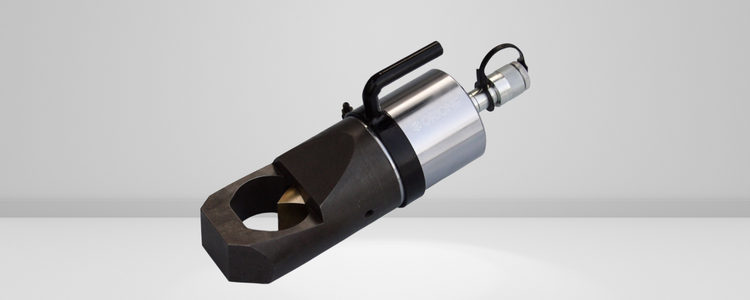
Range M6 - M48 / Max. Working Pressure 700 bar
| Model | Stud Diameter mm | Stud Diameter Inch | Nut A/F mm | Nut A/F Inch | Approx Wt. (kg) |
|---|---|---|---|---|---|
| ONSA-1018 | M6-M12 | 1/4”-3 /8” | 42295 | 1/2”- 11/16” | 1 |
| ONSA-1824 | M12-M16 | 3/8”- 9/16” | 18-24 | 11/16”- 15/16” | 2 |
| ONSA-2432 | M16-M22 | 9/16”- 3/4” | 24-32 | 15/16”- 11/4” | 3 |
| ONSA-3241 | M22-M27 | 3/4”- 1” | 32-41 | 115/16”- 15/8” | 4.5 |
| ONSA-4150 | M27-M33 | 1”- 11/4” | 41-50 | 15/8”- 2” | 9.6 |
| ONSA-5060 | M33-M39 | 11/4”- 11/2” | 50-60 | 2”- 23/8” | 13 |
| ONSA-6075 | M39-M48 | 11/2”- 17/8” | 60-75 | 23/8”- 215/16” | 34 |
| Model | Stud Diameter mm | Stud Diameter Inch | Nut A/F mm | Nut A/F Inch | Approx Wt. (kg) |
|---|---|---|---|---|---|
| ONSS-1636 | M10-M24 | 3/8” - 7/8” | 16-36 | 11/16” - 1 7/16” | 11 |
| ONSS-3651 | M22-M33 | 7/8” - 1 1/4” | 36-51 | 1 7/16” - 2” | 12 |
| ONSS-4660 | M30-M39 | 1 1/8” - 1 1/2” | 46-60 | 1 13/16” - 2 3/8” | 35 |
| ONSS-5770 | M36-M45 | 1 3/8” - 1 3/4” | 57-70 | 2 1/5” - 2 3/4” | 36 |
| ONSS-7089 | M45-M60 | 1 3/4” - 2 1/4” | 70-89 | 2 3/4” - 3 1/2” | 78 |
| ONSS-7998 | M52-M68 | 2” - 2 1/2” | 79-98 | 3 1/8” - 3 7/8” | 79 |
| ONSS-95108 | M64-M72 | 2 1/2” - 2 3/4” | 95-108 | 3 7/8” - 4 1/4” | 123 |
| ONSS-114127 | M72-M80 | 2 3/4” - 3 1/4” | 114-127 | 4 1/4” - 5” | 135 |
| ONSS-124136 | M80-M90 | 3 1/4” - 3 1/2” | 124-136 | 5” - 5 1/4” | 138 |
| Model | Stud Diameter mm | Stud Diameter Inch | Nut A/F mm | Nut A/F Inch | Approx Wt. (kg) |
|---|---|---|---|---|---|
| ONSS-1636 | M10-M24 | 3/8” - 7/8” | 16-36 | 11/16” - 1 7/16” | 11 |
| ONSS-3651 | M22-M33 | 7/8” - 1 1/4” | 36-51 | 1 7/16” - 2” | 12 |
| ONSS-4660 | M30-M39 | 1 1/8” - 1 1/2” | 46-60 | 1 13/16” - 2 3/8” | 35 |
| ONSS-5770 | M36-M45 | 1 3/8” - 1 3/4” | 57-70 | 2 1/5” - 2 3/4” | 36 |
| ONSS-7089 | M45-M60 | 1 3/4” - 2 1/4” | 70-89 | 2 3/4” - 3 1/2” | 78 |
| ONSS-7998 | M52-M68 | 2” - 2 1/2” | 79-98 | 3 1/8” - 3 7/8” | 79 |
| ONSS-95108 | M64-M72 | 2 1/2” - 2 3/4” | 95-108 | 3 7/8” - 4 1/4” | 123 |
| ONSS-114127 | M72-M80 | 2 3/4” - 3 1/4” | 114-127 | 4 1/4” - 5” | 135 |
| ONSS-124136 | M80-M90 | 3 1/4” - 3 1/2” | 124-136 | 5” - 5 1/4” | 138 |
What are Stud Bolt Tensioners?
Stud bolt tensioners are hydraulic tools that consist of a load cell, a bridge, a puller, and a nut. The load cell is a hollow cylinder that contains a hydraulic piston and a seal. The bridge is a metal frame that connects the load cell to the puller. The puller is a threaded rod that engages with the stud or bolt. The nut is a standard hexagonal nut that fits on the stud or bolt.
Advantages of Stud Bolt Tensioners
Stud bolt tensioners have several advantages over conventional torque wrenches or impact wrenches. Some of these advantages are:
Other Benefits
Accuracy and repeatability
Stud bolt tensioners can achieve very high accuracy and repeatability of bolt load, as they eliminate any friction or torsion effects that can affect torquing methods. They also allow for simultaneous tensioning of multiple fasteners, ensuring uniform loading across the flange or joint.
Speed and ease of operation
Stud bolt tensioners are easy and fast to use, as they require minimal manual effort and can be operated by one person. They also reduce the risk of human error or fatigue with torquing methods.
Safety and reliability
Stud bolt tensioners are safe and reliable tools that reduce the risk of over-tightening or under-tightening fasteners, which can cause leaks, failures, or accidents. They also prevent any damage to the rivets, flange, or joint surfaces, which can compromise their integrity or performance.
Applications of Stud Bolt Tensioners
Stud bolt tensioners are devices that apply a controlled amount of tension to threaded fasteners, such as bolts and studs, to achieve a desired clamping force. Stud bolt tensioners are commonly used in industries that require high-precision boltings, such as oil and gas, power generation, petrochemical, and nuclear.
Stud bolt tensioners are versatile tools that can be used for various applications that require precise and reliable bolting. Some examples of these applications are:
Components of Stud Bolt Tensioners
Stud bolt tensioners consist of three main components: a hydraulic pump, a hydraulic hose, and a tensioner unit. The hydraulic pump provides the pressurized fluid that drives the tensioner unit. The hydraulic hose connects the pump to the tensioner unit. The tensioner unit consists of a load cell, a puller, and a nut-rotating socket. The load cell measures the applied tension and displays it on a gauge. The puller is a hollow cylinder that fits over the stud and pulls it axially. The nut rotating socket is attached to the puller and rotates the nut to lock the tension.
Operation of a Stud Bolt Tensioner
The process of a stud bolt tensioner is as follows:
How To Use Stud Bolt Tensioners?
The working principle of stud bolt tensioners is simple: they apply a direct axial load to the fastener by pulling up on it with hydraulic pressure. To use a stud bolt tensioner, you need to follow these steps:
1. Place the nut on the stud or bolt and hand-tighten it.
2. Place the puller over the stud or bolt and screw it into the load cell.
3. Secure the bridge over the puller to the load cell with locking screws.
4. Connect the load cell to a hydraulic pump with a hose.
5. Apply hydraulic pressure to the load cell until the desired bolt load is reached. The load cell will extend and pull up on the stud or bolt, creating an axial load.
6. While maintaining hydraulic pressure, tighten the nut with a torque wrench until it contacts the flange or joint surface.
7. Release hydraulic pressure and remove the hose from the load cell.
8. Remove the bridge, puller, and load cell from the stud or bolt.
How to select the perfect Stud Bolt Tensioners for your application?
Stud bolt tensioners are hydraulic tools that apply a specific and uniform axial load to bolts and studs without any torsional stress or damage to the threads. They are widely used for critical applications such as pipeline flanges, heat exchangers, pressure vessels, compressor covers, boiler feed pumps, and windmills.
But how do you choose the suitable stud bolt tensioner for your application? Here are some factors to consider:
Bolt or stud size
The stud bolt tensioner should match the diameter and thread pitch of the bolt or stud you want to tighten. The range of bolt sizes that can be tensioned by a single tool varies depending on the model and manufacturer. For example, some stud bolt tensioners can cover M6 to M100 (¼" to 4") bolt sizes, while others may have a narrower or wider range.
Bolt or stud length
The stud bolt tensioner should have enough stroke length to achieve the required bolt elongation and load. The stroke length is the distance the tensioner's piston can travel when pressurized. The longer the stroke, the more extension, and gear can be applied to the bolt or stud. However, longer strokes also mean more extensive and heavier tools, which may not fit in tight spaces or be easy to handle.
Working pressure
The working pressure is the maximum hydraulic pressure that can be applied to the stud bolt tensioner. The higher the operating pressure, the higher the load that can be used for the bolt or stud. However, higher working pressures also mean higher hydraulic pump requirements and safety risks. The working pressure of most stud bolt tensioners ranges from 1000 to 1500 bar (14,500 to 21,750 psi).
Tool weight
The tool weight is the mass of the stud bolt tensioner without any accessories or adapters. The tool weight affects the ease of handling and installation of the tensioner, especially for large or overhead applications. The tool weight also affects the transportation and storage costs of the tensioner. The tool weight of most stud bolt tensioners ranges from 1 to 20 kg (2 to 44 lbs).
Tool design
The tool design refers to the shape and configuration of the stud bolt tensioner. There are different types of tool designs, such as top-side, subsea, windmill, multi-stage, compact, etc. Each class has advantages and disadvantages, depending on the application and environment. For example, top-side tensioners are designed for above-water applications, while subsea tensioners are designed for underwater applications. Windmill tensioners are designed for wind turbine applications, while multi-stage tensioners are designed for applications with limited access or clearance.
Tool features
The tool features refer to the additional functions or capabilities of the stud bolt tensioner that enhance its performance or usability. Some standard tool features are:
These are some of the main factors you should consider when selecting a perfect stud bolt tensioner for your application. Of course, other factors may depend on your specific needs and preferences. You can consult with reputable manufacturers or suppliers of stud bolt tensioners for more information and guidance on choosing the best tool for your job.
Why Choose Orione Hydropower?
Stud bolt tensioners are hydraulic tools that apply a direct axial load to fasteners without any torsional stress or damage. They are designed for operation in various applications, such as pipeline flanges, heat exchangers, pressure vessels, compressor covers, boiler feed pumps, windmills, etc.
They offer several advantages over traditional tightening methods, such as accuracy, repeatability, speed, ease of operation, safety, and reliability. If you are searching for a reliable and efficient way to tighten bolts and studs on your critical applications, consider using stud bolt tensioners.
Orione Hydropower has built a solid customer base by specializing in application solutions, timely delivery of hydraulic products, and sales service of Hydraulic jacks, Hydraulic Systems, Hydraulic Power Pack, and elements for almost all industries such as Machine Tools, Steel Plants, Cement Industries, Process Industries, Constructions, and OEM.
The organization's primary goal is to provide high-quality, dependable services to industries. The purpose of the product and creating cost-effective solutions that fulfill or surpass our customers' expectations are the focus of our thoughts and activities, not the product itself.
Orione Hydropower is a leading producer, supplier, exporter, and trader of Nut splitters in Telangana, India. This Nut splitter is available across India. Please quote here if you have this product!

